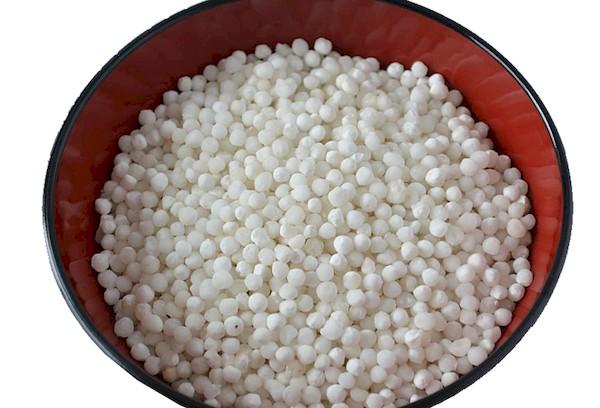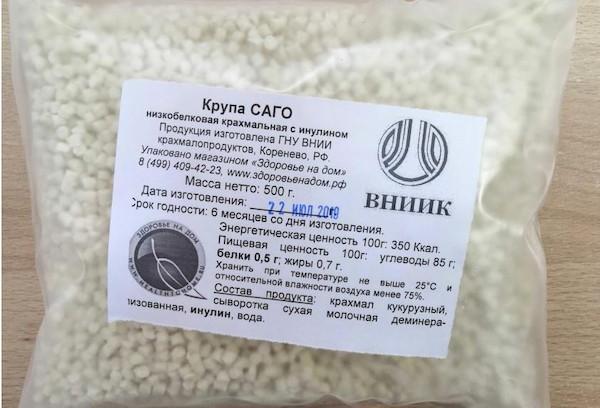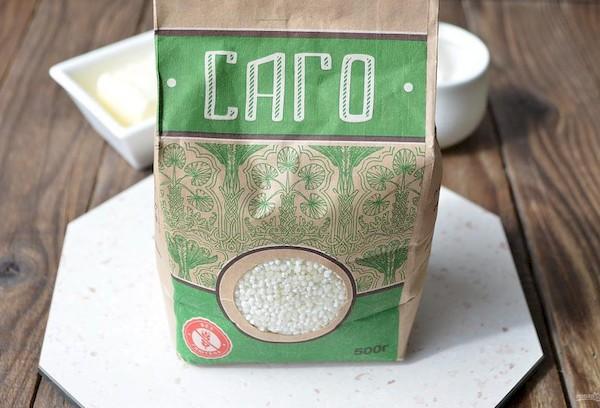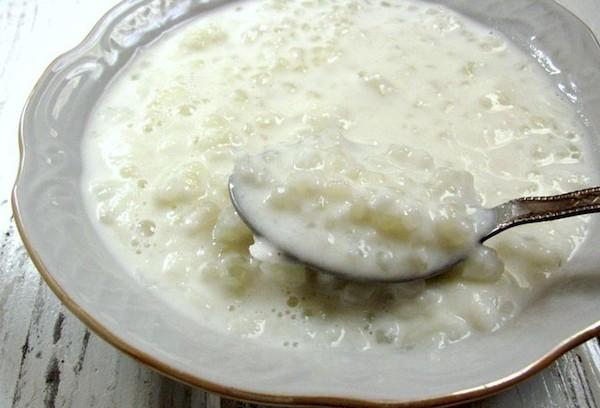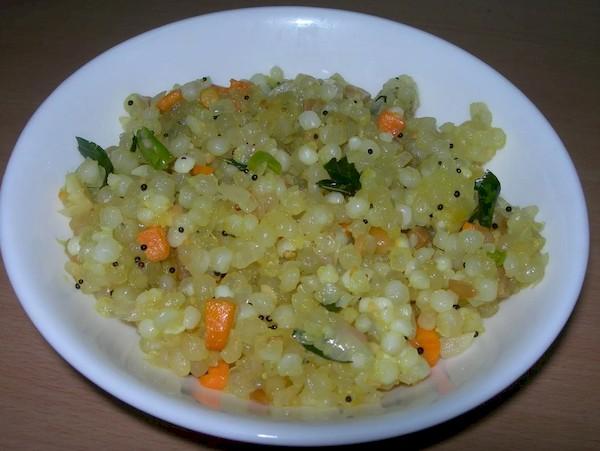What is sago grain made from and what kind of porridges are prepared from it?
Sago is a grain obtained from starch. It received its name in honor of the sago palm, from the trunk of which the original raw materials are extracted. The result is small white grains that resemble balls in shape. This is a very useful product, the use of which has a positive effect not only on the digestive system, but also on the nervous system.
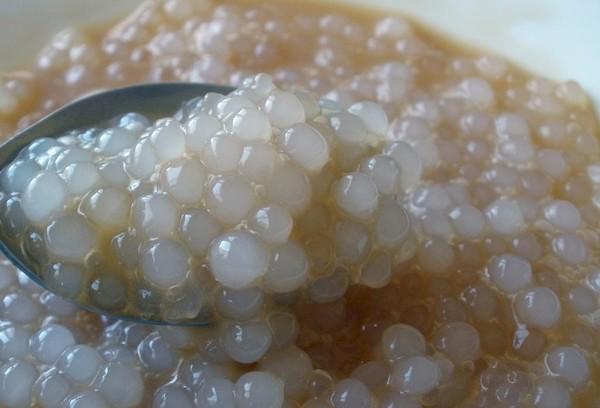
Sago grains are actively used in cooking. Dishes made from it can be not only side dishes, but also sweets. The most important quality of cereal is its ability to greatly increase in size during cooking. Because of this, it acts as a thickener in many dishes.
What is sago made from?
Now that we know what sago is, we can take a closer look at its production process. We have already briefly answered the question of what the cereal is made of. Sago palms are a special type of palm tree, which is represented by only 15 species. You can meet them in several places in the world. Among them:
- Thailand.
- Fiji Island.
- Southeast Asia.
- Malay Archipelago.
- New Guinea.
In suitable climatic conditions, people grow such plants intentionally. Different parts of the palm tree are used in different areas. But one of the main goals of such agriculture is food production. From one tree you can get 800 kg of raw material, which, after processing, turns into 150 kg of sago cereal. For the local population, this product is the basis of the diet.In addition, you can also make money from sago, since the grains are actively sold to other countries.
Interesting fact! The sago palm can produce fruit only once during its life cycle. This happens 7-15 years after planting. The tree is then cut down and the starch accumulated in the trunk is used to create cereal.
What is contained in 100 grams of sago grains?
Sago can be classified as a fairly high-calorie cereal. And it’s not surprising, because it’s made of starch. The nutritional value of the product is 350 kcal per 100 grams. For many, distribution by macro is also important:
- 16 grams of protein.
- 70 grams of carbohydrates.
- 1 gram of fat.
Also, a serving contains 14 g of water and 2 g of ash. This delicacy also contains useful vitamins and microelements. You can see their exact content in 100 grams of cereal in the table below.
| Component | Content (in mg) | Percentage of Daily Value |
| Sodium | 25 | 1,9 |
| Potassium | 300 | 12 |
| Phosphorus | 250 | 31,25 |
| Magnesium | 50 | 14,3 |
| Calcium | 250 | 25 |
| Sulfur | 100 | 2,5 |
| Zinc | 2,8 | 23,4 |
| Iron | 2 | 11,8 |
| Thiamine (B1) | 0,2 | 15,3 |
| Riboflavin (B2) | 0,5 | 31,3 |
| Pantothenic (B5) | 1 | 20 |
| Pyridoxine (B6) | 0,5 | 27,8 |
| Vitamin E | 6 | 40 |
| Vitamin A | 0,01 | 1 |
Sago also contains other useful components, but in smaller quantities. Due to the fact that the content of none of the substances exceeds the daily norm, you can eat such cereals constantly without worrying about the size of portions. Although, it’s worth thinking about the latter, because it is important to include each dish in the calorie allowance.
Types of sago grains
In fact, only one type of sago stands out in cooking. However, there are not enough sago trees to provide the whole world with real grain. In addition, palm trees grow only in some remote regions. Therefore, in order not to spend money on transport, some manufacturers offer direct analogues of sago, made using the same technology, but from different raw materials.
As a result, on the shelves you can find:
- Classic option. It is made from the inner part of the palm tree. The result is small white balls, naturally not endowed with any taste. When added to food, they are given flavor through spices and sauces.
- Tapioca. This product can also be called a variety of sago, since the method of preparing the cereal is very similar. But the raw materials are different - in this case, the roots of the cassava bush are used. In nature, this plant is poisonous, but special processing helps to get rid of toxins and obtain healthy dietary food.
- Potato version. Here, in exactly the same way, starch is taken as a basis, only not from palm trees, but from potatoes. For the first time, such a product began to be produced in the USSR. It turns out to be a fairly cheap analogue of imported cereal. True, it is somewhat inferior in terms of benefits.
- Corn sago. Corn on the cob also contains a lot of starch. So it is not surprising that they decided to use such raw materials to produce an analogue of tropical cereals.
The corn and potato analogues are very similar in appearance to the original sago version. They differ only in a barely noticeable shade. But the chemical composition of such cereals is completely different. The price is also very different.
What is cooked from sago grains: 10 popular dishes
Sago is not as widespread in northern latitudes as oatmeal or, for example, buckwheat. However, due to its neutral taste, it can be used in a variety of dishes.
Here are some examples:
- Sausage. Such grains are often added to homemade sausages. It makes the texture more elastic and adds benefits to the treat. You can make the dish dietary by choosing chicken fillet as the main component. You can also add, for example, fatty pork.Then the food will turn out less healthy, but incredibly tasty.
- Sapso. This is a non-standard dish with cereals, vegetables and meat marinated in a sweetish sauce. The result is a very juicy and appetizing seven, and thanks to the meat juices, the sago becomes less neutral.
- Milk soup. Many people have hated this soup since kindergarten. But the key to success is to try cooking it in a new way. With almonds and sago, this food takes on a completely different taste that can be enjoyed by many.
- Lingonberry soup. Another unusual version of the stew. Lingonberries have a very bright taste, and many cereals form a not very pleasant contrast with it. Sago is an ideal option in this case. The addition of cereal makes the food more filling, and the subtle taste goes well with the berry sourness.
- Porridge. The most classic method of cooking any cereal is applicable to this type. The only thing that is important to consider is that sago has almost no taste of its own. Therefore, to get a real delicacy, you will have to think about spices and additives.
- Souffle. Additional components are often added to the souffle to make the mass more stable and add volume. Neutral-tasting balls that soak and expand in size are an excellent option.
- Pilaf. The classic version of this recipe includes rice, but you can make pilaf even healthier and more interesting if you replace it with an exotic product. Most often, this option is used for vegetarian dishes.
- Ground meat. Surprisingly, from this product you can even get a vegetarian substitute for meat, which is suitable for cutlets and other hot dishes. However, this recipe is not suitable for vegans, since it uses eggs.
- Stuffed apples. A very useful recipe, which is not yet very popular among the people. Both children and adults love baked apples. And the sago filling will help make the usual natural dessert even more interesting.
- Fruit soup. This idea may seem wild to some, but try it once and you will surely fall in love with this soup. As an additional ingredient, cherries are best because of their bright taste and abundance of juice.
- Casserole. This food is most often prepared with a potato version of the product. It perfectly replaces potatoes in a casserole, helping to make the dish more dietary and interesting.
In general, sago can be used as a substitute for any other neutral-tasting grain. It will also work as a side dish or main dish. However, in this case, do not forget about additional ingredients to make the food appetizing.
How to choose quality sago grains in the store
It is not difficult to choose quality cereals. There are just a few aspects you need to pay attention to:
- Package. When exposed to air, sago quickly deteriorates, so the packaging of a good product should be vacuum and sealed.
- Best before date. This indicator is important for all food products. Even if all storage rules are followed and suitable packaging is used, they may deteriorate over time.
- Purity. As a rule, boxes and bags of cereals have a transparent area through which you can see the cereal. It should be white and not contain any unnecessary impurities.
It is also important to look at the raw materials from which the cereal is made. If you want to get the classic version, you should additionally check that the product is not made from potatoes or corn.
